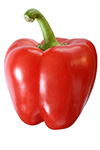Sign In Chef

By using our free meal planner (and the rest of spoonacular.com) you have to agree that you and only you are responsible for anything that happens to you because of something you have read on this site or have bought/cooked/eaten because of this site. After all, the only person who controls what you put in your mouth is you, right?
Spoonacular is a recipe search engine that sources recipes from across the web. We do our best to find recipes suitable for many diets — whether vegetarian, vegan, gluten free, dairy free, etc. — but we cannot guarantee that a recipe's ingredients are safe for your diet. Always read ingredient lists from the original source (follow the link from the "Instructions" field) in case an ingredient has been incorrectly extracted from the original source or has been labeled incorrectly in any way. Moreover, it is important that you always read the labels on every product you buy to see if the product could cause an allergic reaction or if it conflicts with your personal or religious beliefs. If you are still not sure after reading the label, contact the manufacturer.
We also attempt to estimate the cost and calculate the nutritional information for the recipes found on our site. Again, we cannot guarantee the accuracy of this information. Additionally, our nutrition visualizer that suggests that you limit sodium, sugar, etc., and get enough protein, vitamins, and minerals is not intended as medical advice. Similarly, our health tips are based on articles we have read from various sources across the web, and are not based on any medical training. The team behind spoonacular does not possess any medical qualifications and the information may be found to be incorrect or out of date based on future research. If you need help planning your diet or determining which foods (and recipes) are safe for you, contact a registered dietitian, allergist, or another medical professional.
Spoonacular is not responsible for any adverse effects or damages that occur because of your use of the website or any information it provides (e.g. after cooking/consuming a recipe on spoonacular.com or on any of the sites we link to, after reading information from articles or shared via social media, etc.)
×$88.92 per serving

1 likes

Ready in 45 minutes

Spoonacular Score: 8%
If you want to add more Indian recipes to your recipe box, Luscious Thai Chicken Pineapple Curry might be a recipe you should try. This main course has 28092 calories, 316g of protein, and 3021g of fat per serving. This gluten free, dairy free, and whole 30 recipe serves 4 and costs $88.92 per serving. 1 person were impressed by this recipe. A mixture of ml ginger, grams pineapple, cherry tomatoes, and a handful of other ingredients are all it takes to make this recipe so scrumptious. From preparation to the plate, this recipe takes about 45 minutes. It is brought to you by Foodista. Taking all factors into account, this recipe earns a spoonacular score of 61%, which is solid. If you like this recipe, take a look at these similar recipes: Thai Chicken Curry with Pineapple, Thai Pineapple Red Curry Chicken, and Thai Pineapple Paleo Chicken Curry with Coconut Milk.
Riesling, Gruener Veltliner, and Sparkling rosé are my top picks for Curry. The best wine for Indian food will depending on the dish, of course, but these picks can be served chilled and have some sweetness to complement the spiciness and complex flavors of a wide variety of traditional dishes. One wine you could try is NV Amber Falls Winery Sarah's Choice Riesling. It has 5 out of 5 stars and a bottle costs about 16 dollars.
 This semi-sweet aromatic Riesling has a distinct "honey" bouquet. Perfectly balanced, this wine has tasting notes of ripe fruit on the front and a lingering light finish.
This semi-sweet aromatic Riesling has a distinct "honey" bouquet. Perfectly balanced, this wine has tasting notes of ripe fruit on the front and a lingering light finish.
» Get this wine on Amazon.com






































Read the detailed instructions on Foodista.com – The Cooking Encyclopedia Everyone Can Edit